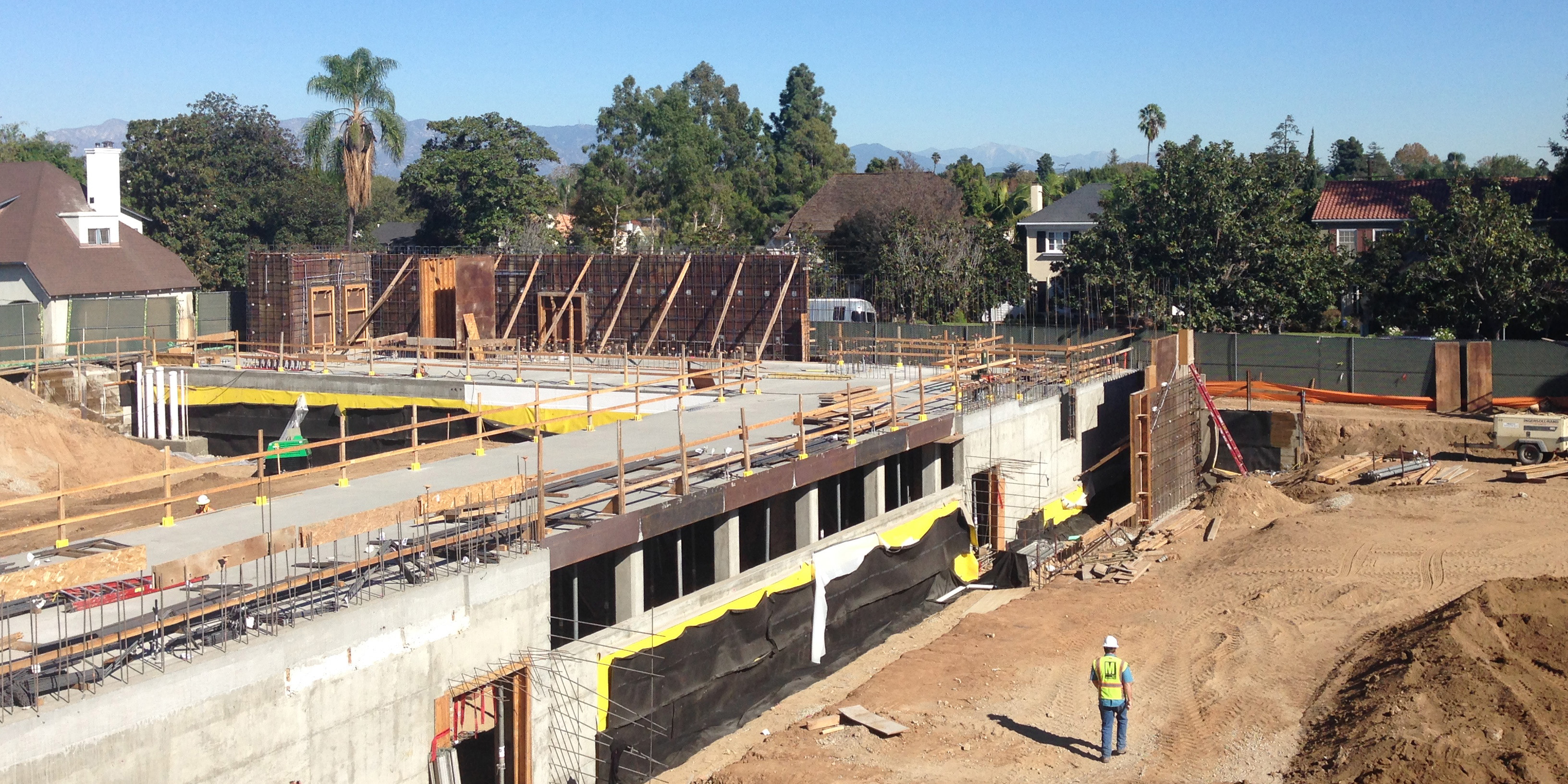
Photo by Sarah Ryan ’17
The Arden Project remains on track despite the forecasted El Niño storms because construction is being accelerated, according to Facilities Manager Matt Riddle.
“Our construction team has been very aggressive with their schedule. One of the main reasons for that is so that we can gain some ground and be ahead of the schedule in anticipation of losing some days to rain,” Riddle said. “We’re in pretty good shape right now.”
Los Angeles can expect an exceptionally wet winter these next coming months due to the El Niño weather pattern. According to the Climate Prediction Center (CPC) and the International Research Institute for Climate and Society, the likelihood of El Niño to affect the Northern hemisphere during the winter of 2015-2016 is at 95% as of Oct. 8, 2015. And both the National Oceanic and Atmospheric Administration and the CPC expect the 2015-2016 El Niño weather pattern to be the strongest in decades.
El Niño is a weather pattern that emerges due to abnormally warm ocean water in the Pacific. In California, El Niñoleads to winter storms, as well as mudslides and floods due to the higher than average amounts of rainfall. The El Niño weather pattern typically happens every three to seven years during December and January.
Riddle stated that it is necessary to complete certain tasks, such as underground work and the foundations, on the project before the possible weather pattern affects the progress of the construction.
“We’re trying to basically ‘get out of the ground,’ so we’re trying to get these foundations and substructures that are beneath the ground or down in the holes,” Riddle said. “If we have big, huge trenches for footings exposed, that would be bad, because it’s just waiting to be filled up with water.”
According to Riddle, the Arden Project construction will remain on schedule to be concluded at the end of the 2016 summer due to careful planning and the acceleration of the project. According to Dean Whaley, the superintendent for the general contractor on the Arden Project, the project was originally scheduled to be built from north to south, starting at the tennis courts and ending with the parking lot, but the schedule has changed to accommodate for the possible rain. The tennis courts, pool building, parking lot and garden area are all being built at the same time, and the soccer field will be the last area to be finished on the back end of the construction schedule.
Science Department Head Jennifer Garrison Ross explained what happens when an El Niño weather pattern occurs.
“The winds are related to the currents, instead of the winds blowing from east to west and taking rain to places like Australia, you end up with this current trying to go [east],” Garrison Ross said, “You end up with storms on the west coast of the U.S., among other places, and the rainfall moves away from Australia into the middle of the Pacific; and so Australia ends up with droughts.”
The last El Niño occurred in 2009-2010, but the last strong El Niño occurred in 1997-1998. In just the state of California, 17 deaths and $550 million in damages can be attributed to the 1997-1998 El Niño, according to the National Climatic Data Center.






